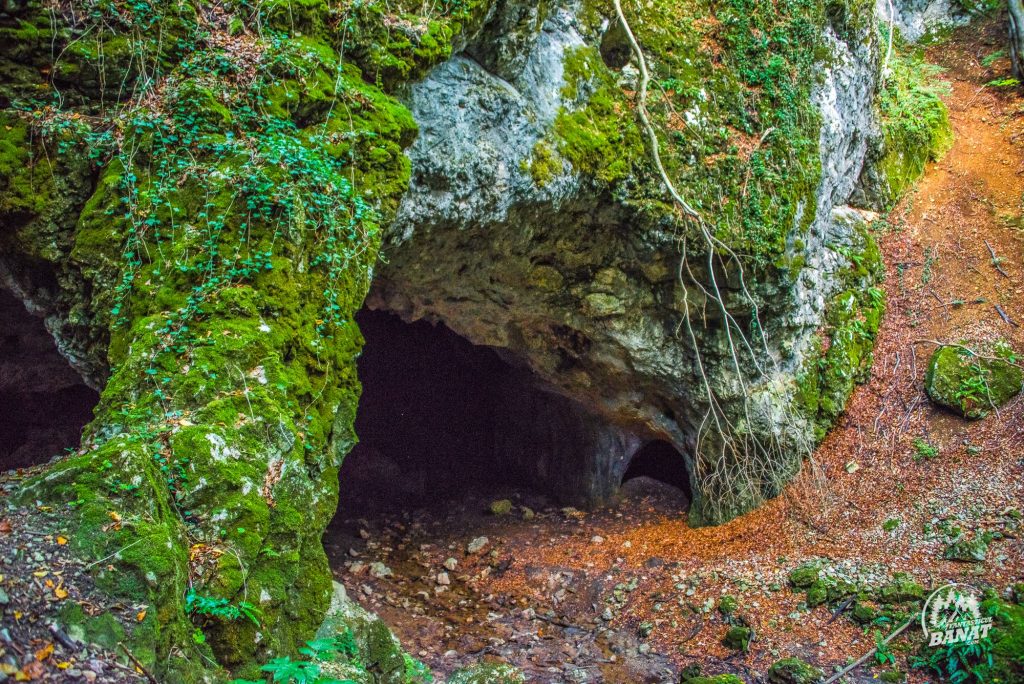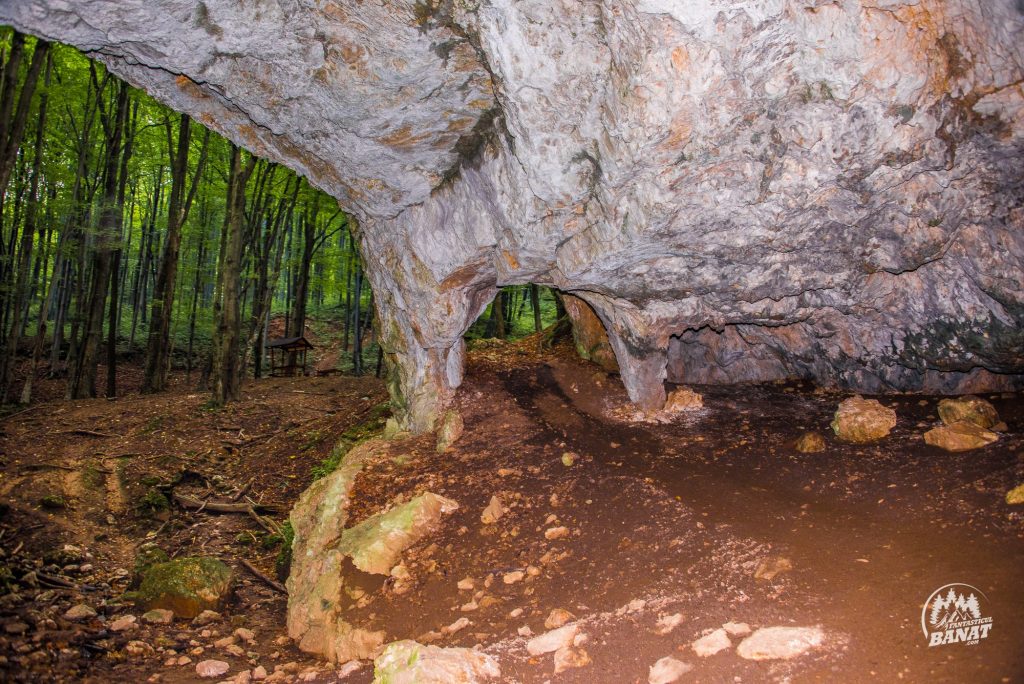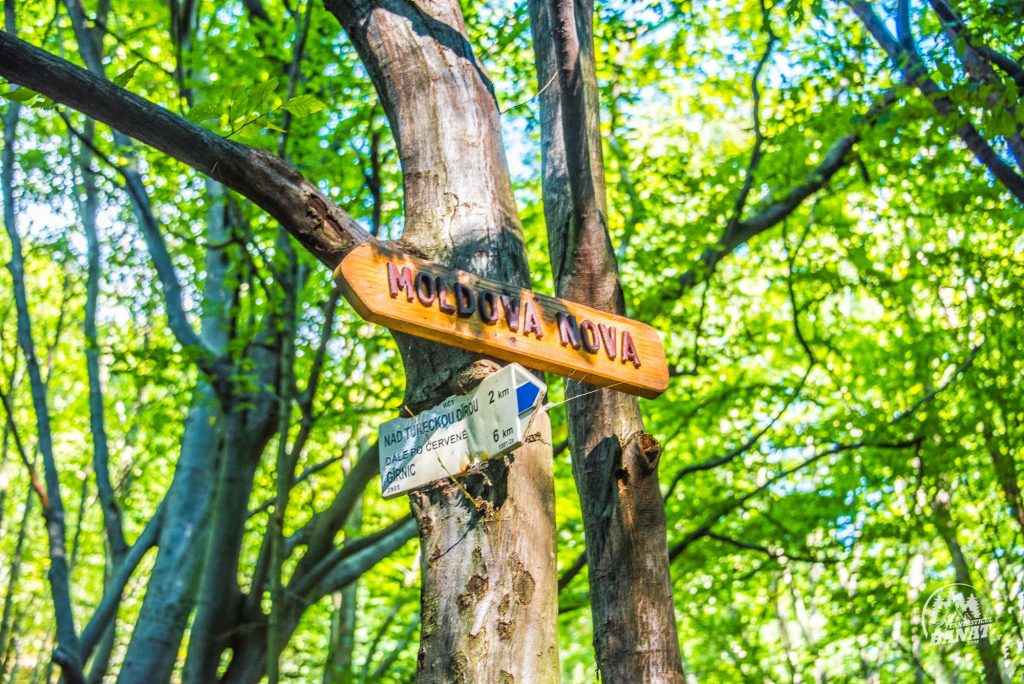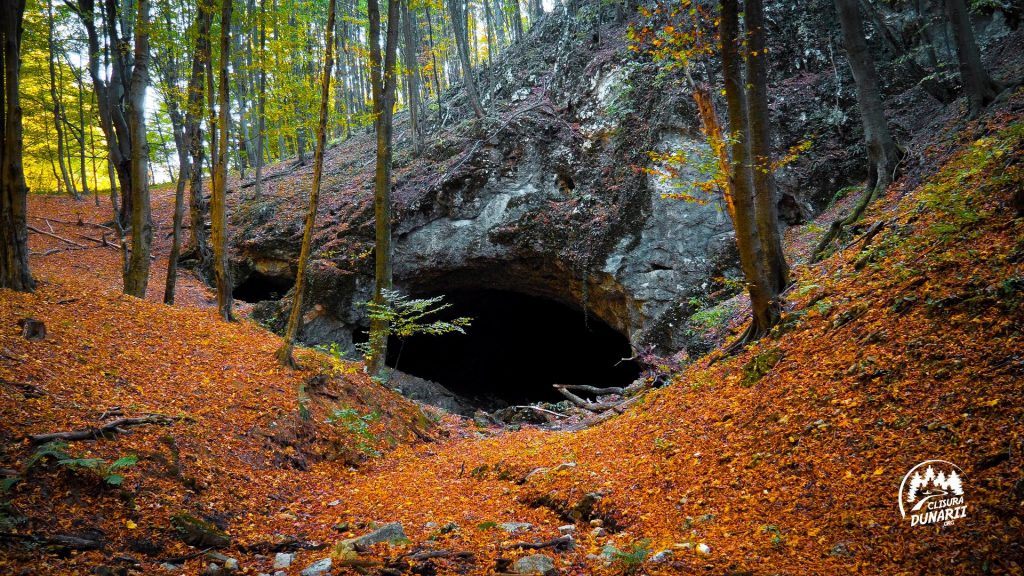The cave is located on the territories of the Iron Gates Natural Park. Its length is 1370 m, and it is placed 3 km from Moldova Noua.
The Cave is the underground part of the Ogașul Găurii, which flowed initially through the current Glade Cave. Galleries and halls are mostly developed on a system of diaclaze, totaling 714 m; 372 m can bee accessed by going upwards, and 342 m by going downwards. A lively little stream enters the cave beneath a monumental gate 10 m high and 20 m wide, and flows then through an enormous hall, over 100 m long, 60 m wide and about 25 m maximum in height. The Dome hall is supported by a huge pillar of limestone, split in two by a gallery on the upper level. Here speech acquires a strange resonance, due to the echo.The room is filled with boulders and has a very irregular shape because of the numerous channels and inaccessible niches.
Some corners are adorned with white calcite deposits, beautiful creations of the water action, small stalagmites, cave pearls and mondmilch. Others have polished walls, in a niche of the dome has its shelter a colony of several hundred rinolofi. On the floor, beside piles of excrements and plenty of snails houses, there are many bones, true “cemeteries” of bat bones, rodents and insectivores. On the floor of the Great Hall live troglobiont beetles and crustaceans in the underground.
Note that here were found traces of a settlement from the period of the Stone Age.
The creek vanishes beneath the ceiling of the Great Hall at the end, only to reappear at the bottom of the resurgence accessible part. Here it gets two small affluents, then some of the water is lost by two strainers in the floor (to reappear in the stream out to 75 m below the resurgence) and the remaining water goes through the gallery to end the day out on the other side of the massive limestone, at about 400 m in a straight line from entering the insurgency. The output stream is through a much smaller opening. Penetrating through it in the mountains, we find that this part of the cave is totally different from the first. It begins with a small vestibule. After the first corner, the gallery is narrow, low and sinuous, with small diverticula, where the 2-3 m tall portions alternate with others, where we must stoop or crawl. Along the way we can admire the forest of stalactites, stalagmites and very low parietal concretions, which hang above the water mirroring in it.
The cave is located in the protected area of the Great Valley reservation. It is not degraded, because only the bright side of the Great Hall is visited.
Covering the cave requires helmet, overalls, warm clothing (being 8.5-9.5 ° even in summer and 98-100% humidity) and rubber boots. Please note that during strong rainfall, the underground water increases visibly, blocking the passage in the lower portion of the gallery accessible via resurgence, and you could be very easily slip on the slopes of the Great Hall.
The time needed for visiting both sectors of the cave: 1-1½ hours
History:
Entries are known to locals; shepherds sometimes find shelter at the entry by insurgency, where the light fires. It was mapped and described in the years 1960-1961 by L. Botosaneanu, A. Negrea St. Black and between 1967 and 1969 it was subject to a cave ecology research (A. Negrea and St. Coast).









